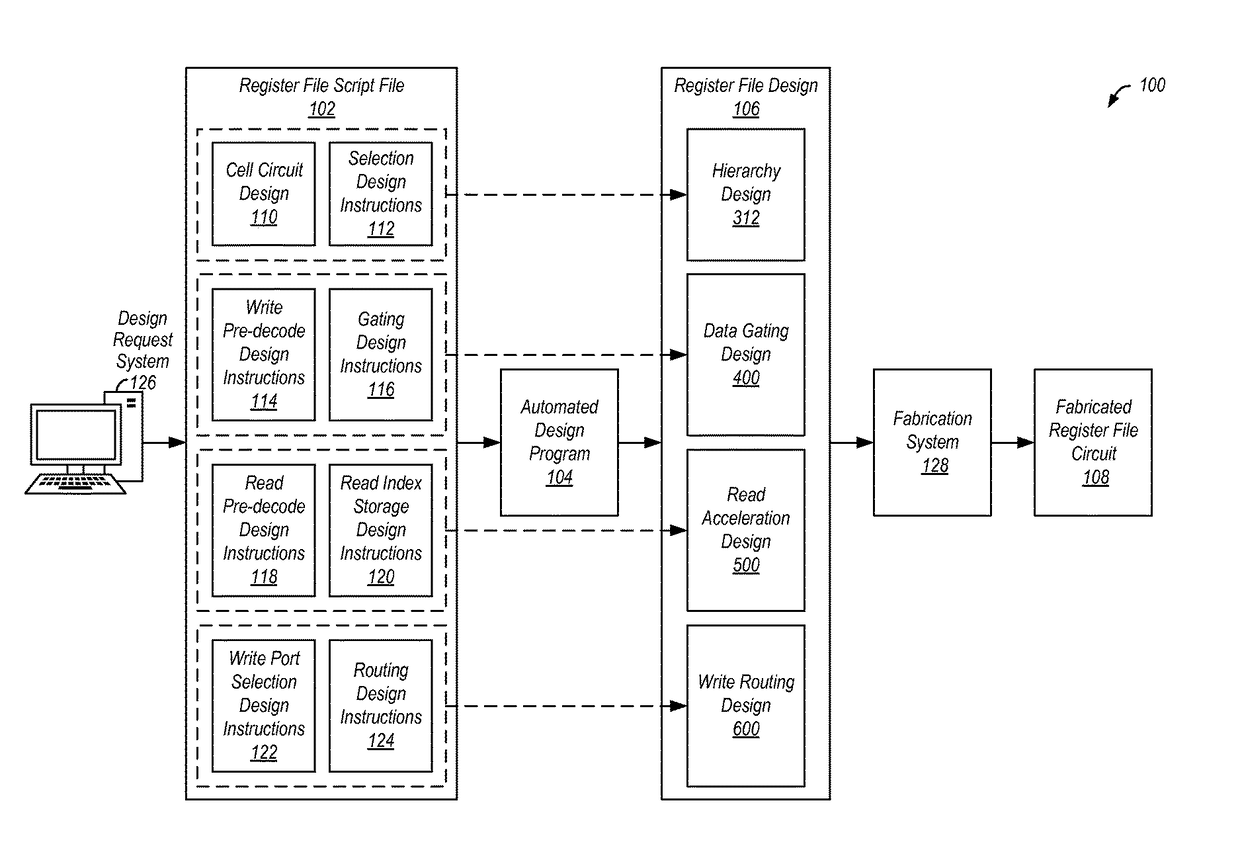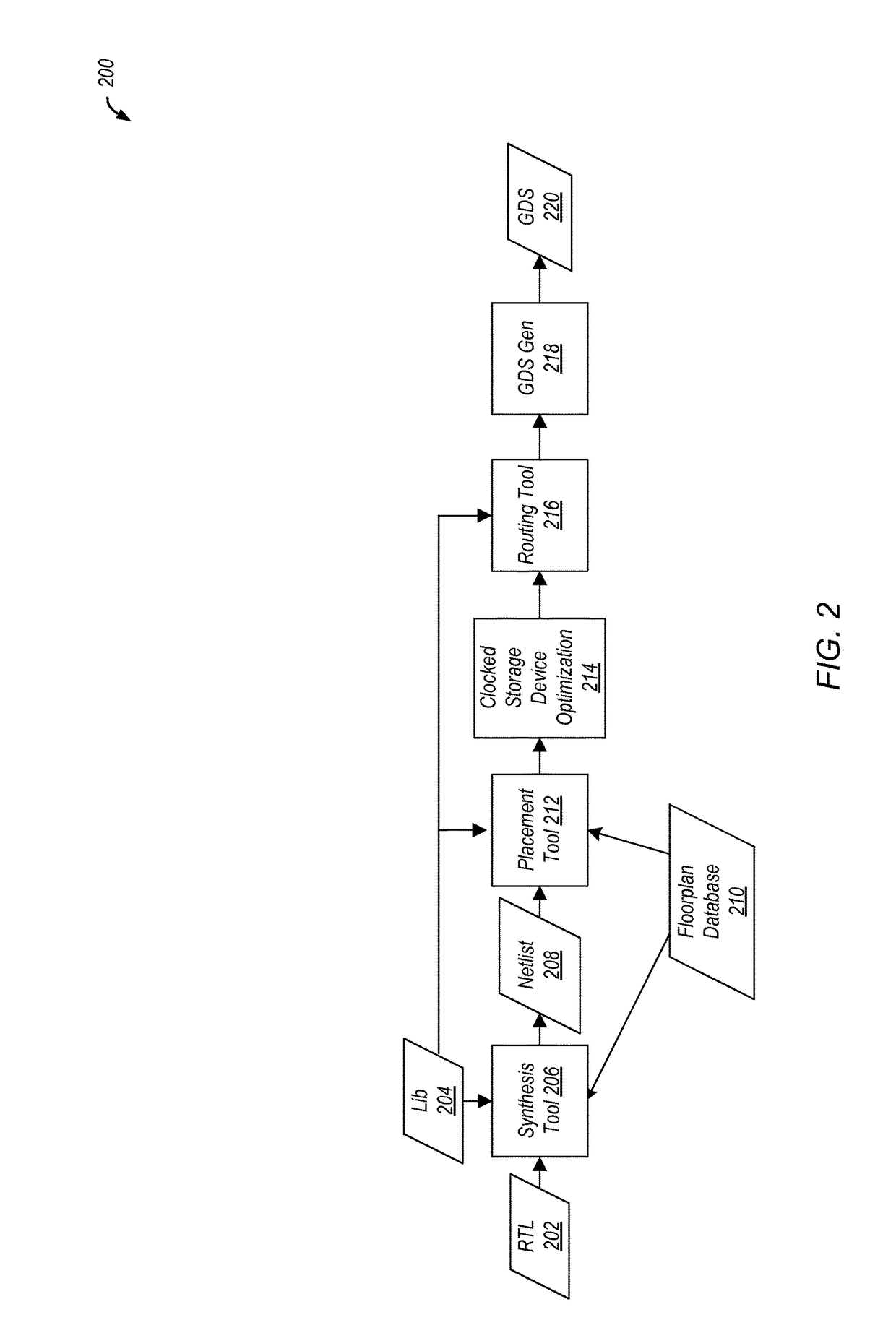Register file circuit design process
a circuit design and register file technology, applied in the field of register file circuit design process, can solve the problems of affecting the design flow of integrated circuits, affecting the design flow of circuits as a whole, and affecting the overall circuit complexity, so as to simplify the interface with the designer, save valuable time for the design engineer, and increase the design complexity
- Summary
- Abstract
- Description
- Claims
- Application Information
AI Technical Summary
Benefits of technology
Problems solved by technology
Method used
Image
Examples
Embodiment Construction
[0026]Register files are used in various functional blocks of central processing unit (CPU) design, such as being used for temporary storage of data during arithmetic, logic, data manipulation, and cryptography operations. As described above, such register files are traditionally manually designed, especially when large (e.g., 128 entries or 10,000 entries), multi-ported (e.g., 10 read ports and 4 write ports or 1000 read ports and 500 write ports), high-speed (e.g., 2 gigahertz (GHz) or 2 terahertz (THz)) designs are desired. Some or all of the processes described herein may be utilized to automatically generate such a large, multi-ported, high speed register file circuit design. This register file circuit design can be used in conjunction with a fabrication process to create a register file circuit (e.g., as part of a larger integrated circuit or as a separate circuit). Although specific numbers are provided regarding the number of entries, the number of ports, and the speed of th...
PUM
 Login to View More
Login to View More Abstract
Description
Claims
Application Information
 Login to View More
Login to View More - R&D
- Intellectual Property
- Life Sciences
- Materials
- Tech Scout
- Unparalleled Data Quality
- Higher Quality Content
- 60% Fewer Hallucinations
Browse by: Latest US Patents, China's latest patents, Technical Efficacy Thesaurus, Application Domain, Technology Topic, Popular Technical Reports.
© 2025 PatSnap. All rights reserved.Legal|Privacy policy|Modern Slavery Act Transparency Statement|Sitemap|About US| Contact US: help@patsnap.com



